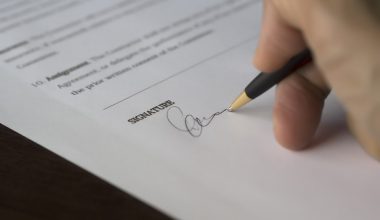The rule of Caveat emptor, or “let the buyer beware,” is a basic principle of both contract law and business. The Latin phrase caveat emptor, which means “let the buyer beware,” is used in marketing. The phrase alludes to a rule of contract law that requires the buyer of a good or service to exercise due diligence.
Caveat Emptor
Caveat emptor is a Latin phrase that means “buyer beware.” The expression serves as a warning to potential purchasers to do their research and question the seller thoroughly. Any issues that develop with the product after the sale are not the seller’s fault. This implies that customers must confirm a product meets their quality standards before buying it. Because the seller is not required to provide a refund for the item.
According to the caveat emptor principle, the purchaser has to perform the necessary due diligence before purchasing to ensure that a product is in good condition and meets his or her needs. The buyer will not be eligible for any damage remedies if the purchased item has significant flaws and they fail to take the necessary actions.
Any purchase of a good or service can benefit from the caveat emptor principle, but these days, real estate transactions are where it is most frequently applied. The caveat emptor principle does not hold when the seller provides false information to the buyer or when the product is misrepresented. When it comes to real estate transactions, some states in the US accept caveat emptor more frequently than others.
Understanding Caveat Emptor
Establishing the caveat emptor principle is to stop post-purchase disputes brought on by information asymmetry, which happens when the seller is more knowledgeable than the buyer about the caliber of a good or service.
For example, if caveat emptor is in effect and Peter wants to purchase a car from John, Peter may decide to ask John some questions to learn more about the car, such as whether any significant parts require replacement, how frequently will he service such vehicle, and other inquiries.
However, if Peter purchases the vehicle for the asking price without making any effort to ascertain the vehicle’s true condition or value, and the vehicle subsequently malfunctions, the responsibility will not fall to John. The caveat emptor principle forbids sellers from freely publicizing a fraudulent transaction. If John had been given false information regarding the history of maintenance or the need for repairs for the vehicle, for example, the responsibility falls on him for committing fraud. Thus making Peter eligible for compensation.
Exceptions to the Caveat Emptor Rule
There are a few clear exceptions to the caveat emptor rule. Let’s quickly review these exceptions.
#1. Product’s fit for the Buyer’s Purpose
When the buyer declares his intention to purchase the goods from the seller, it is assumed that he is confident in that choice. Therefore, the seller has to ensure that the goods are appropriate for their intended use.
A might go to B to buy a bicycle, for instance. He reveals to B his intention to ride his bike up a mountain to go hiking. If B provides A with a standard bicycle that is insufficient for A’s needs, the responsibility will fall to the seller.
#2. Goods Purchased under Brand Name
Sellers are not responsible for the performance or quality of goods sold to customers with brand names or under trade names. As a result, there is no implied guarantee that the goods will fulfill the buyer’s specific requirements.
#3. Goods Sold by Description
The buyer who solely relies on the product description falls outside of the rule. If the items do not match the description, the seller will be responsible.
#4. Goods of Merchantable Quality
Section 16 (2) talks about the exception for goods of merchantable quality. The sections stipulate that the seller of goods sold by description must offer goods of merchantable quality or those that meet market standards.
As a result, if the goods are of poor quality, the buyer will not be held responsible. It will be the seller’s responsibility. This exception, however, won’t apply if the buyer has had a reasonable opportunity to inspect the item.
#5. Sale by Description and Sample
The buyer will not be held responsible if the actual goods differ from either the sample or the description if the product was sold based on both. The seller will then bear full responsibility.
#6. Fraud or Misrepresentation by the Seller
Another noteworthy exclusion is this one. If the seller lies to the buyer to gain their consent, caveat emptor does not apply. Furthermore, the seller shall not be liable to the purchaser for any material defects in the goods they will later discover upon closer examination. In both cases, the seller will be at fault.
Caveat Emptor Examples
Example 1
Adam sells John his house. John asked the seller about the flaws in the house before making the purchase. Adam informed him that although the upstairs bathroom had a leak, it had already been fixed. Adam also advised him to be cautious because, despite the repairs, a small leak could still occur occasionally. John didn’t inspect the bathroom carefully before deciding to purchase the home.
The dining room ceiling and bathroom floor got bad after three months due to a sizable leak. John decided to file a claim for damages against Adam. The judge holds that John is not entitled to any relief because the caveat emptor principle is in force. John hadn’t done his homework carefully enough to make sure the flaw in the bathroom wouldn’t cause any more damage.
Example 2
Joe, a friend of Kelly’s, decides to sell Kelly a house. She took a casual look at the house. After all, she trusted him to purchase because she knew him. One week later, Kelly moved after paying him. Over time, she discovered problems with the roof and the water faucets.
To solve the problem, she spoke with Joe and asked for a lower payment because the house would require her to incur more costs. Unfortunately, Joe was unwilling to comply. Kelly subsequently went to court.
The judge was in favor that the responsibility would not fall on Joe. Since there was no basis for a claim because Joe did not provide any written evidence in support of a money-back guarantee for any flaws they will discover after the sale.
For the buyer to assign responsibility to the seller, you must satisfy all three of the following conditions. If the buyer and seller agree on the transaction’s goals if the buyer counts on the seller’s expertise and/or technical skill, and if the seller sells the requested goods.
Rule of Caveat Emptor
The law presumes that the bulk of the product in a sample sale will be of comparable quality to the sample and will have provided the buyer with a reasonable opportunity to inspect it. In cases where the buyer discloses to the seller the precise purpose for which they require such goods, the law presumes that the goods in the resulting contract must be of merchantable (average) quality and reasonably suitable for that purpose. In other words,
- If a product’s description and its actual functions are different, the caveat emptor principle does not apply.
- There will be less likelihood of a quality issue if the buyer purchases an item from a seller or brand recognized for the standard of quality. The caveat emptor will not apply if it does.
- In a fraudulent transaction where the buyer gave their consent, the caveat emptor rule will not protect the seller.
- if a customer purchases a product after receiving a positive sample. The caveat emptor rule will not be applicable if the delivered item is of poor quality.
Reducing Caveat Emptor
Market forces and other factors may cause caveat emptor to lose some of its usefulness in certain circumstances. Legal rulings on real estate quality issues are starting to favor buyers because a seller typically has a better understanding of a property’s condition than a buyer.
What Is The Difference Between Caveat Emptor and Caveat Venditor?
Caveat emptor refers to circumstances where buyers must be diligent in investigating the condition of an item up for sale. Any issues that arise after the sale are not the seller’s fault. However, a different adage now frequently applies when talking about sales.
You can translate the phrase “let the seller beware” as “caveat venditor.” Nowadays, there are often implied warranties for both goods and services. There is a guarantee that the majority of consumer goods will work when used for their intended purposes unless you see a label bearing “sold as is” or there is another agreement between the buyer and seller.
Caveat venditor has generally taken the place of caveat emptor. Vendors now have to make sure that their products and services meet standards. Customers anticipate that products will have an implied warranty and there is an opportunity to return for a refund unless otherwise instructed. As a result, vendors must now ensure that their goods and services live up to expectations. Buyers anticipate that products will come with an implied warranty and be returnable for a refund unless otherwise instructed.
Today, the caveat venditor principle governs most sales in the US, which you can translate as “let the seller beware.” According to this idea, a merchantability implied warranty applies to all products. Unless specifically stated (for instance, “sold as is”) or agreed upon with the buyer, nearly all consumer goods guarantees to operate if used for their intended purpose.
For instance, a buyer of a coffee grinder who discovers that it is unable to grind coffee beans may return the item for a full refund under an implied warranty of merchantability. However, it might be challenging to return a used coffee grinder that the same customer bought from a thrift store marked “sold as is.” Although the caveat emptor principle no longer applies to consumer transactions, it’s still important to know when the exception still applies.
States That Apply Caveat Emptor
The majority of states do not consistently uphold caveat emptor, giving consumers some comfort that their purchases will be protected. The courts in the following states continue to uphold it for real estate transactions.
- Alabama
- Arkansas
- Georgia
- North Dakota
- Virginia
- Wyoming
Why Does Caveat Emptor Exist?
You use caveat emptor more in the real estate sector in today’s society. Its objective is to transfer responsibility for conducting due diligence to the buyer in a transaction.
Is Caveat Emptor A Legal Doctrine?
According to the legal principle of caveat emptor, prospective buyers must thoroughly inspect the property before making a decision. The Sale of Goods Act incorporates the caveat emptor principle in its entirety. It means to “let the buyer beware.” .”
Conclusion
If the property does not meet your expectations, a caveat emptor clause releases the seller from all liability. Before making this kind of purchase, do your homework and make sure you know exactly what you’re getting.
If an item is being sold “as is” or has similar language on the tag, the phrase “caveat emptor” applies. Check the item out completely and satisfactorily. Consult the seller about the condition. Once you’ve made a purchase, you can’t get a refund.
Other types of transactions don’t frequently involve the caveat emptor rule anymore. The laws intended to provide consumers with more protection and information have led to this. It is more common to use the Latin phrase caveat venditor, which means “let the seller beware.”
Caveat Emptor FAQs
What Is Caveat Emptor?
The Latin phrase caveat emptor, which means “let the buyer beware,” warns potential purchasers to do their research and question the seller thoroughly before making a purchase.
What Are The Rules Of Caveat Emptor?
- If a product’s description and its actual functions are different, the caveat emptor principle does not apply.
- There will be less likelihood of a quality issue if the buyer purchases an item from a seller or brand recognized for the standard of quality. The caveat emptor will not apply if it does
Which States Apply Caveat Emptor?
- Alabama
- Arkansas
- Georgia
- North Dakota
Related Articles
- ENCUMBRANCE IN REAL ESTATE: DEFINITION & HOW IT WORKS
- REAL ESTATE ACCOUNTING: Definition and the Basics Principle of Real Estate Accounting
- How Being Financially Literate Can Help You Run a Business
- Marketing Strategies: How A ‘Free-Delivery’ Offer Can Improve Sales For Your Business
- Consultative Selling Approach: Complete Guide to Consultative Sales






